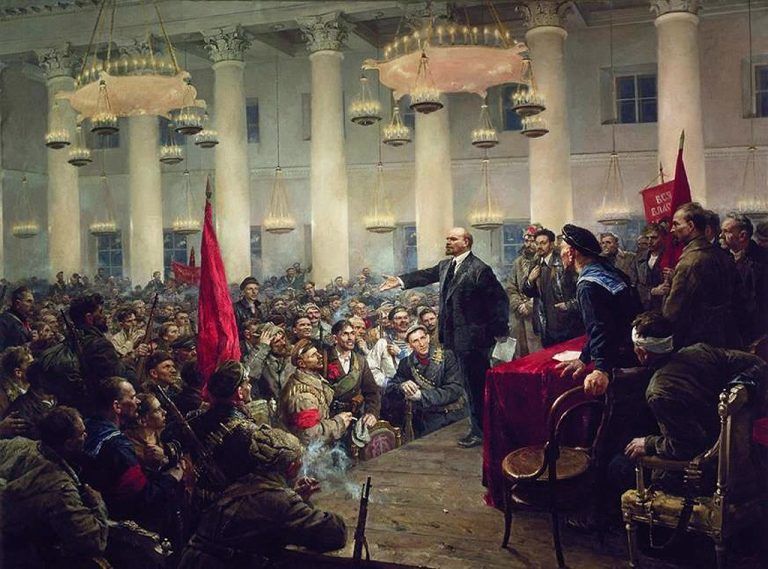Crashing economy, vanishing jobs and unpaid wages are forcing workers onto the streets.
Jinchuan & Dikang, chinaworker.info
China’s economy is now in its deepest crisis since the restoration of capitalism. This is also part of an unprecedented crisis of the global capitalist system. Everywhere the crisis inevitably makes class antagonisms more acute as the capitalist class, and regimes like the Chinese Communist Party (CCP), shift the main burden onto the working class and the poor. According to a new report from China Labor Bulletin (China Labour Bulletin Strike Map data analysis: 2023 year in review for workers’ rights) a total of 1,794 worker protests were recorded in 2023, a 216 percent increase on 2022.
Among these, strikes and protests by manufacturing workers increased most, from 37 events in 2022 to 438 in 2023. This not only shows the severity of the economic crisis of Chinese capitalism but also the drastic structural changes occurring.
Regime-controlled unions
China Labour Bulletin (CLB) is a Hong Kong-based NGO, which produces many valuable reports on workers’ struggles and conditions in China. But, in common with most NGOs and liberal-influenced advocacy groups, its political conclusions are weak and do not offer any serious solutions.
A major difference between this group and ourselves, the Marxists, is that CLB endlessly repeats in all its reports the need for the Chinese dictatorship’s official so-called trade union to “do its job” (!) by “representing” workers. Notwithstanding the interesting data contained in this report, therefore, CLB has still not understood that the All China Federation of Trade Unions (ACFTU) is actually “doing its job” — which is to be a boss’s “union,” to obstruct and suppress workers’ protests on behalf of the CCP dictatorship.
The China Labor Bulletin report shows that in 2023, the main area of workers’ struggle remains in the construction industry. As the crisis in the real estate market deepens, property investment contracted by nearly 10 percent from the previous year, and new construction starts have decreased by 40 percent. This illustrates the collapse of the real estate market, overstocked inventory, and the drop in construction projects.
The surge in unfinished projects, wage arrears and job cuts are not confined to private residential construction projects; it also affects government-led and funded public infrastructure projects. Due to soaring local debts, in January, the central government ordered 12 provinces to stop or postpone infrastructure projects.
China has at least 50 million construction workers. Last year, there were at least 945 wage-related protests by migrant construction workers, more than twice the number in 2022. Struggles are particularly intense in real estate companies that are already in deep crisis, such as Evergrande, Sunac, Country Garden, etc. However, because construction projects often involve multiple layers of outsourcing, these companies can evade responsibility and blame “third-party” contractors.
Workers’ main demands
A notable trend is that unemployed construction migrant workers can only gather at intersections, waiting for daily wage work. As indicated in CLB’s report, these workers only earn about 80 yuan per day (US$11), barely a fraction of construction wages in the old days.
The number of strikes in the manufacturing industry increased tenfold compared to 2022. A major cause is the global capitalist crisis and US-China Cold War, driving the trend of massive foreign capital outflow and supply chain “decoupling.” Factories are moving overseas, or inland to cheaper regions, causing workers to lose their livelihoods. The technology war with the US led to an average of 31 semiconductor companies going bankrupt every day last year. Coupled with the collapse of the property market, higher unemployment and general fall in incomes, this has of course reduced consumer spending.
The main demands of protesting workers are for payment of overdue wages and compensation for layoffs due to relocation and closures. Under the Chinese dictatorship there are no genuine independent workers’ organisations. There is a screaming absence of even rudimentary trade union structures and therefore a massive void where no coherent struggle traditions have yet been accumulated by the working class.
Struggles are mostly isolated to one workplace or city. In this state of disorganization, it inevitably follows that today’s protests combine heroism and anger on one side, with a very basic, or low, level of consciousness and expectations on the other. Workers’ protests do not challenge the capitalists’ right to close factories and impose layoffs. They accept this as “reality” and concentrate their struggles on more “practical” minimal goals such as recovering their unpaid wages and compensation.
Marxists declare our full solidarity with these struggles, while recognising that working-class consciousness — due to the lack of organisation — is still on a rudimentary level at this stage. This contrasts sharply to some workers’ struggle in countries with significant trade union organisations and basic democratic rights (the two things always go hand-in-hand).
In such countries there are known cases of big workers’ struggles to oppose layoffs, relocations, and factory closures, sometimes demanding the company is taken into public ownership with guarantees given to cancel layoffs and protect all jobs. This is a far more advanced level of struggle than the current situation in China. But it illuminates the road ahead and shows the central importance of the demand for workers to build independent trade unions.
According to China Labour Bulletin, factories use various excuses to refuse to pay social security and other legally-mandated benefits, or find ways to force workers to resign “voluntarily.”
E-commerce and Gig economy
E-commerce sales are increasingly squeezing out traditional bricks-and-mortar retailing, putting retail workers’ jobs and conditions under huge pressure. Traditional retail enterprises are closing down. In the first half of 2023, Carrefour closed over 70 percent of its supermarkets, resulting in significant job losses. These workers did not receive reasonable compensation.
The rise of e-commerce sales and platform companies has unleashed new pressures on workers’ job security and pay levels. An army of several millions of so-called “self-employed” platform workers has been created. Last year, there were 41 new ride-hailing platforms and 1.26 million more drivers compared to 2022 according to Ministry of Transport data. Without a significant increase in demand, the industry has become saturated leading to intense competition among drivers as platforms engage in price wars to boost their market share. Particularly for drivers who entered the industry by taking out vehicle loans, their current income might not even cover the debt repayments.
Under the pressure of the economic crisis, even previously considered relatively stable public sector positions, such as healthcare and education, are becoming precarious. In two districts of Nanjing, civil servants and employees of public institutions had their salaries delayed for three months last year. Guangdong significantly cut civil servants retirement pensions by more than one-third.
Reports indicate that some city governments, such as Tianjin, are already facing financial bankruptcy, with more than 18,000 employees of the Tianjin Public Transportation Group being unpaid for months. In November, the Maternal and Child Health Hospital in Ruzhou City, Henan province, owed over five hundred medical staff their salaries, medical insurance, and provident fund, with some being unpaid for up to a year. This triggered protests by doctors at the hospital, to which the local health commission responded with only two words: “No money!”
Class struggle or cooperation?
Also in Henan, 34 teachers in Sanmenxia publicly declared a hunger strike, protesting that for four years since they qualified as state teachers, they have not signed labour contracts and are owed wages and social security. In September, teachers from two middle schools in Heyang City, Shaanxi province, went on strike and staged sit-ins at the school gates to protest against months of unpaid wages. Similar protests by hundreds of teachers occurred in Jingdezhen, Jiangxi province.
The facts in this CLB report provide a shocking picture of the capitalist crisis unfolding in the Xi Jinping era. But when we read CLB’s conclusions, it is as if the authors have not understood their own work. “As workers are fighting for their rights … CLB has long advocated for China’s official trade union to take up its mandate to represent workers,” they say. They argue that this, “would support the country’s economic and social goals by ensuring both public and private rights are protected, and citizens can have a fair chance at earning a decent livelihood.”
With these arguments they hope to win over the capitalist and the CCP authorities, presenting this as some type of win-win arrangement — not class struggle, but class cooperation!
CLB has pursued this line for almost 20 years (since they ceased advocating for independent unions saying this was “impossible” in China). In all that time, CLB cannot point to a single example where the official ACFTU has supported workers’ protests. Yet we can cite countless examples when the official unions have closed their doors to workers and even participated in strike-breaking repressive actions against strikes. The Jasic struggle of 2018 is a graphic example of the counter-revolutionary role of the official so-called trade unions.
As the crisis of CCP capitalism intensifies, the working class has no choice but to resist. The working class and the youth will turn to mass struggle, and through this they will establish a new militant workers’ movement and — if linked to a socialist and Marxist agenda — realise the goal of abolishing capitalism.




